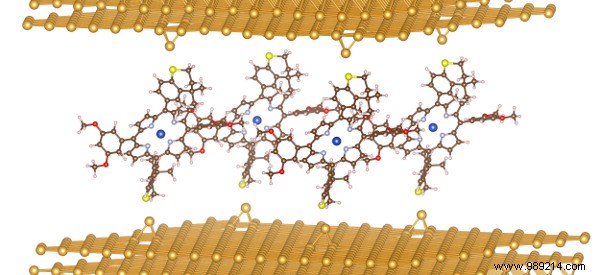The race has been going on ever since the first silicon computer chips began to appear. Hardware manufacturers have constantly outdone themselves in a frenzy to cram as many transistors as possible into ever-smaller spaces. In 2014, Intel celebrated the release of processors with transistors 6,000 times smaller than the diameter of a single strand of hair. We are far, however, from the dream of realizing the manufacture of transistors at the molecular level. On June 17, 2016, a group of researchers from Peking University in Beijing may have proven that this dream may be closer to reality than people think. As the race for smaller hardware continues, we may as well take a look at what this may mean for us and the challenges manufacturers may face in trying to make molecule-sized technology a reality.
SummaryThe problem with the word "molecule"Size is not everythingWhy this small material is difficultThe takeaway

While it's important to make sure you pack as much punch as possible into a small space, downsizing transistors isn't the only thing you can do. In addition to making an efficient molecular switch that has a significantly longer lifespan (one year) than its predecessors (a few hours), Peking University researchers also achieved another breakthrough:the switch can also communicate in using photons rather than moving electrons. Photons travel much faster than electromagnetic waves (up to 100 times faster), meaning we could both cram more transistors into small spaces and give each of these little buggers a speed boost like this Gordon Moore could only dream of.
As with anything we deal with at the atomic or molecular level, things can get very unstable. For example, electromagnetic fields have a strong tendency to cause a slight shift in the atomic structures of metals and other conductive materials. Such a shift can be interpreted as a signal. Microscopic "grains" of material at the atomic level could also cause transistors to malfunction. Beijing U. researchers have so far managed to create a switch that could turn on and off more than a hundred times, with a durability of one year. While that's a wonderful achievement as it stands, I doubt many people would be thrilled to have a computer with the lifespan of a cancer-prone hamster. The first real challenge is to isolate the micro-electronic environment so that it can operate for more than a decade.
Even if a viable and highly durable molecular switch is eventually built by someone, integrating it into a streamlined manufacturing process is a whole new challenge in itself. For the foreseeable future, integrated circuits are the method of choice for internal hardware communication. Running this large system with molecular switches is nearly impossible. To add insult to injury, measuring things inside the tiny spaces between molecules (which is what you have to do to read the data stored inside them) requires highly specialized environments that require a lot of energy to be maintained.
The effort to have switches the size of some of the smallest molecules humanity can handle is very tempting and holds great promise. That is, if manufacturers can overcome hurdles such as requiring cryogenic temperatures to read data, eliminate the connectivity gap between molecules and electromagnetic circuitry at the caveman level, and somehow mitigate the miniscule lifespan of this technology when put to the test in the real world. If they can jump through these hoops, then yes, molecular switch technology is sure to create a revolution that will make current integrated circuits and silicon-based chips completely obsolete.
When do you think we can overcome all these challenges? Tell us in the comments!